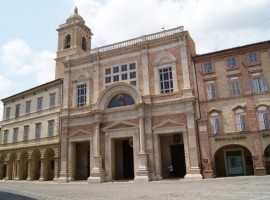
This church is called new Collegiate for it was built where the Trinity Oratory once stood. Construction began in 1700 on the design by Lazzaro Giosafatti and under the direction of Pietro Maggi. Some spoils from the demolition of Santa Maria della Rocca were used on that occasion. The main façade is a mixture of Greek, Roman and Baroque styles. It is characterized by a big lunette in its middle displaying a mosaic…
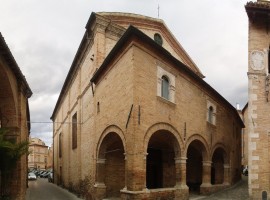
Built in the 15th century, it is sited close to the Town Hall. The structure displays an arcade and two fine stone windows from the sixteenth century. The single-nave interior shows a ceiling decorated by the artist Nardi from Fermo. The church has a very important role during Easter as it keeps the nineteenth-century coffin of the Dead Christ, carried in procession on Holy Friday.
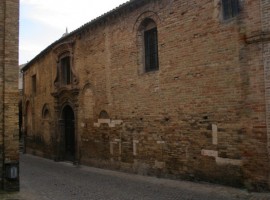
It is located near the church of Our Lady of Sorrows. The façade displays the signs of two small walled-up doors dating back to the 14th century and a trace of the original entrance of St. Anthony’s Church on which left the remains of an old fresco representing St. Anthony by Simone De Magistris (1534 – 1600) are still visible. The interior consists of three naves and was built in the 19th century. On…
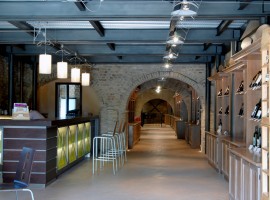
The monastery of St. Francesco was built in the 13th century on the structure of an ancient medieval castle which comprised a small church devoted to St. Martin. Its construction was required by the Clare nuns who devoted it to St. Francesco and settled there till 1515. In the same year Pope Leon X entrusted his legate in the Marche region with the task of carrying out a survey on the alleged…

The church is reached by climbing a few quick steps at the end of which a square off when a handkerchief starts at the entrance. The Church of St. Catherine of Capodirigo, inventories dependency Lateran figure founded by Massari of the villa in 1412 on the ground of the Canons of St. John Lateran. The interior of the Church is built by Mastro Antonio Zannis and Mastro Jacobo Johannis. Backs onto the…
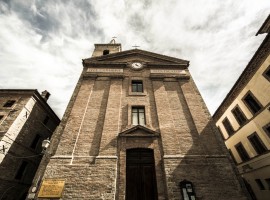
And ‘the mother church, rebuilt in the eighteenth century, in the neoclassical style, has the bell tower of the castrum already, presenting stones with symbols diviners archaic religious orders and corporations. The interior has a nave, presents decorations, statues and stucco artist Ascoli Domenico Paci and suggestive Via Crucis school Carracciesca eighteenth century. Of great interest are the works depicting “St. John the Baptist and St. Juliana “, the” Madonna of Loreto…
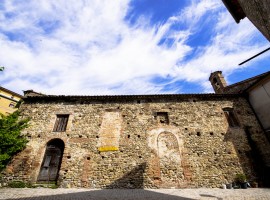
The Church of San Francesco in Comunanza is in late-Romanesque style, with porches in the prospectus and in the west side, a bell tower; the interior has a nave with a trussed roof and stucco altar century. It was built by the writer Antonio Caferri in the seventeenth century. to make a convent of Friars Minor Conventual, but was never used for that purpose.
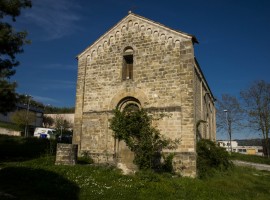
Built in the ninth century, sandstone, on the ruins of a temple dedicated to Dionysus which are columns in blocks of travertine marble, is located at the heart of the late Roman settlement of “Interamnia Poletina Piceni”. And ‘in high style medieval, rectangular in shape, and has the apse divided into three by pilasters, with two gargoyles and mullioned windows in the side walls, blind arches along the perimeter and in the…
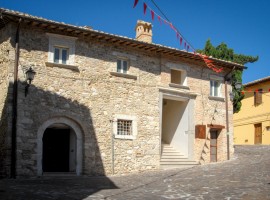
The main church of the center was rebuilt very recently, in 1947. It contains, within it, an interesting piece of religious art of the sixteenth century: a processional cross in gilded silver, as well as some paintings of the seventeenth and eighteenth centuries .
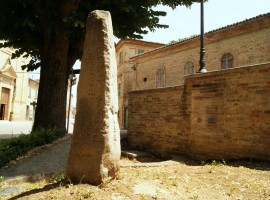
Castignano has the great merit of having given the Italian history the earliest Italic alphabet so far found. It is contained in the famous “stele of Castignano” found in the locality Montecalvo in 1890 is a tufa rock which is now in the Archaeological Museum of Ascoli Piceno. It ‘a funeral stele that has the shape of a memorial stone roughly pyramidal trunk, four-sided, high 1,36, m wide at the base. 0.30…